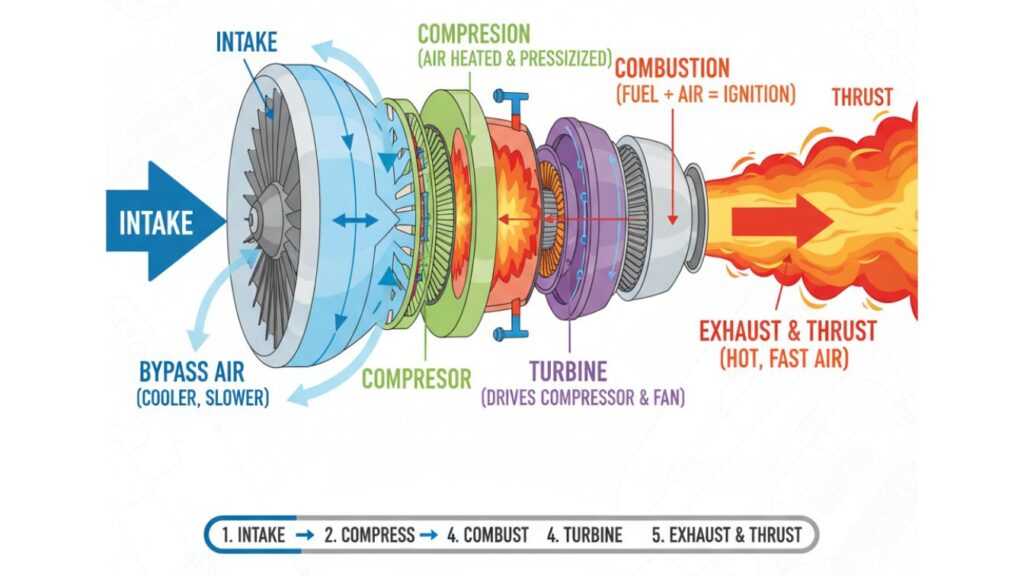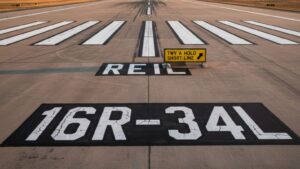People often romanticise flying an aeroplane, talking about how high it goes, how high-tech the cockpit is and how calm the pilots are when they handle the controls. But what if something as simple as a cup of coffee becomes dangerous during a flight? It might seem like a small thing at first, but spilling coffee on the controls in the cockpit can have big effects. This has happened on real flights, and airlines have had to change their procedures because of it.
This post explains what really happens when coffee spills on aeroplane controls, how pilots deal with it and what airlines have learnt to avoid similar problems in the future.
The Cockpit Environment Is More Fragile Than It Looks
Touchscreens, switches and circuit-sensitive control panels are all over the cockpits of modern planes, especially those that fly long distances, like the Airbus A350 or Boeing 787. These are made to handle a lot of use and turbulence, but not liquids. Even though avionics systems look tough, they can be damaged by electrical shorts, smoke and even system shutdowns when they come into contact with fluids.
The European Union Aviation Safety Agency (EASA) says that liquids spilling in the cockpit is a “known risk” and has caused problems with operations in the past.
A Real Event: When Coffee Made Things Go Wrong
In February 2019, a serious event happened on a flight from Frankfurt to Cancun across the Atlantic. A pilot flying an Airbus A330-243 accidentally spilt coffee on the control panel, which was the audio control panel (ACP). This caused smoke and electrical problems in the cockpit, which made the plane have to change course and land in Shannon, Ireland, as an emergency.
The incident cost the airline a lot of money, not just in fuel and logistics, but also in rescheduling passengers and how people saw the brand.
Why Do Spills Make Controls So Sensitive?
There are two main things that make the problem worse.
- There are a lot of electronics in the cockpit: The centre pedestal of most planes is full of high-voltage, high-sensitivity parts that control the engines, the autopilot and the navigation systems. A short circuit can happen with just a few drops of liquid, and it can sometimes damage the units beyond repair.
- Heat plus liquid equals a risk of smoke or fire: Electronics generate heat. Adding a liquid like coffee, especially one with sugar or milk, makes a mix that can conduct electricity and may even cause smoke or fire alarms to go off. Fires on planes are one of the most serious emergencies in aviation.
How Do Pilots Learn to Deal with Such Situations?
Pilots get a lot of training to deal with unusual emergencies, like those caused by spills of fluids. Here are some steps that might be part of the process:
- Giving control to the first officer or captain, depending on who is affected.
- Turning off systems that are affected, if possible.
- Putting on oxygen masks and getting ready for a smoke event, especially if you smell or feel heat.
- Starting a conversation with Air Traffic Control (ATC) to let them know about a possible diversion.
- Using QRH (Quick Reference Handbook) checklists to fix the broken system.
The Federal Aviation Administration (FAA) and EASA, two aviation organisations, regularly update training protocols based on real-life events to make sure pilots know how to respond.
Changes Made After These Events
Airlines and makers of planes have not ignored the issue. Drinks in the cockpit must now have lids and be put on safe, designated surfaces. Airbus, in particular, gave advice on how to run the flight deck to lower the risks that come with spills. Here they are:
- Use cups that have lids.
- Don’t put drinks near the centre console.
- Newer planes have critical control panels that need to be cleaned regularly and have coatings that keep water out.
Some carriers, especially in Europe and the Middle East, have even changed the design of their cup holders so that they can hold modern cup sizes and keep drinks away from electronics.
Are There Any Long-Term Solutions?
Some people have suggested making cockpits less likely to spill, but it can be hard and costly to add new features to old planes. When designing planes, safety, efficiency and cost are all important. It’s not always possible to change the control panels that are already there.
That being said, newer models are being made with stronger protective cases around important systems, and manufacturers are looking into materials and layouts that can lower the risks of liquid getting in by accident.
Summing Up
A cup of coffee that spills on the ground might not seem like a big deal, but at 35,000 feet, it can cause electrical problems, emergency procedures and expensive detours. Airlines and manufacturers are aware of the problem and have already taken steps to lower the risk, such as changing how drinks are served and redesigning the layout of the cockpit.
In aviation, even small mistakes can have big effects. Now, even something as simple as where a pilot puts their coffee cup is taken very seriously. There are a lot of steps that go into a smooth landing, and yes, even some lessons learnt from spilt coffee.










